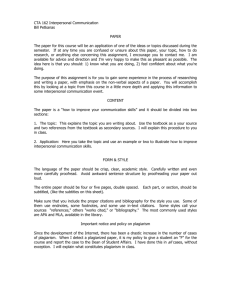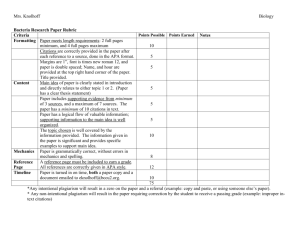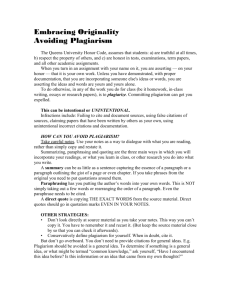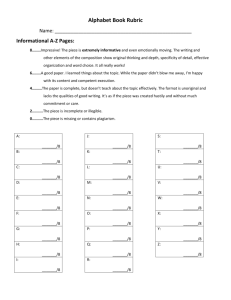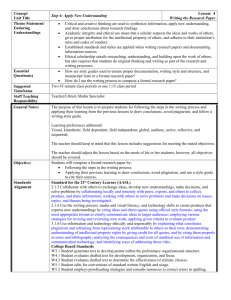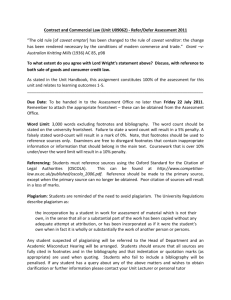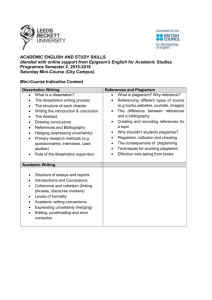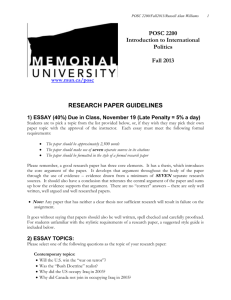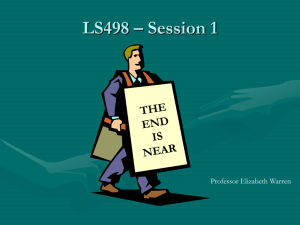Plagiarism Detection Checklist
advertisement
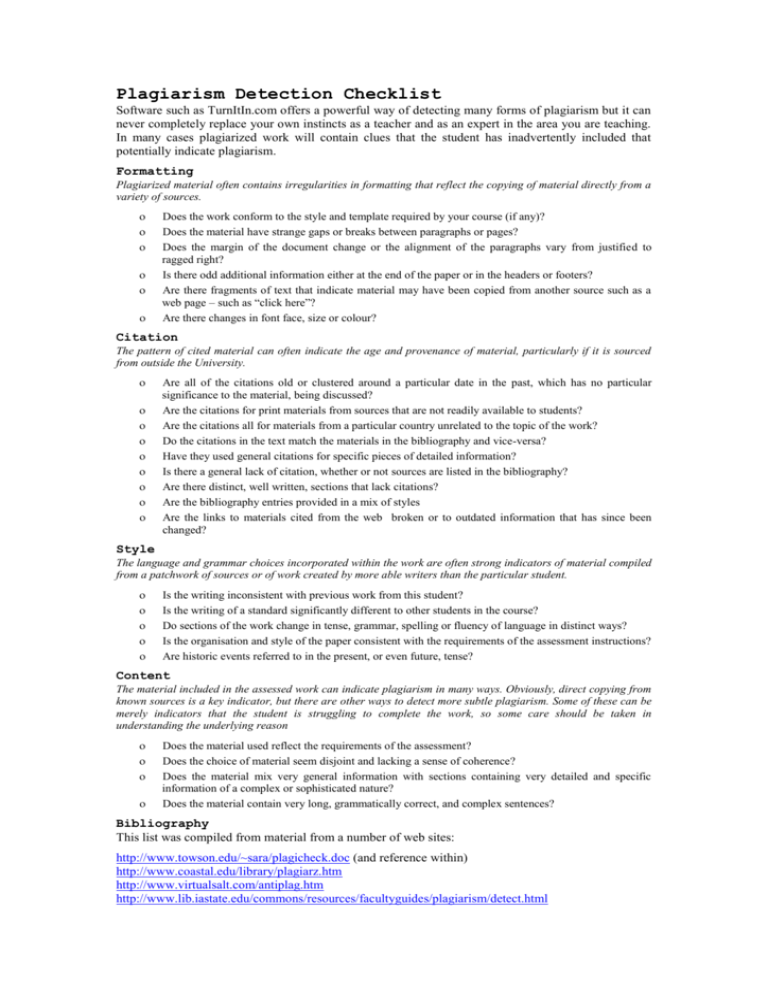
Plagiarism Detection Checklist Software such as TurnItIn.com offers a powerful way of detecting many forms of plagiarism but it can never completely replace your own instincts as a teacher and as an expert in the area you are teaching. In many cases plagiarized work will contain clues that the student has inadvertently included that potentially indicate plagiarism. Formatting Plagiarized material often contains irregularities in formatting that reflect the copying of material directly from a variety of sources. Does the work conform to the style and template required by your course (if any)? Does the material have strange gaps or breaks between paragraphs or pages? Does the margin of the document change or the alignment of the paragraphs vary from justified to ragged right? Is there odd additional information either at the end of the paper or in the headers or footers? Are there fragments of text that indicate material may have been copied from another source such as a web page – such as “click here”? Are there changes in font face, size or colour? Citation The pattern of cited material can often indicate the age and provenance of material, particularly if it is sourced from outside the University. Are all of the citations old or clustered around a particular date in the past, which has no particular significance to the material, being discussed? Are the citations for print materials from sources that are not readily available to students? Are the citations all for materials from a particular country unrelated to the topic of the work? Do the citations in the text match the materials in the bibliography and vice-versa? Have they used general citations for specific pieces of detailed information? Is there a general lack of citation, whether or not sources are listed in the bibliography? Are there distinct, well written, sections that lack citations? Are the bibliography entries provided in a mix of styles Are the links to materials cited from the web broken or to outdated information that has since been changed? Style The language and grammar choices incorporated within the work are often strong indicators of material compiled from a patchwork of sources or of work created by more able writers than the particular student. Is the writing inconsistent with previous work from this student? Is the writing of a standard significantly different to other students in the course? Do sections of the work change in tense, grammar, spelling or fluency of language in distinct ways? Is the organisation and style of the paper consistent with the requirements of the assessment instructions? Are historic events referred to in the present, or even future, tense? Content The material included in the assessed work can indicate plagiarism in many ways. Obviously, direct copying from known sources is a key indicator, but there are other ways to detect more subtle plagiarism. Some of these can be merely indicators that the student is struggling to complete the work, so some care should be taken in understanding the underlying reason Does the material used reflect the requirements of the assessment? Does the choice of material seem disjoint and lacking a sense of coherence? Does the material mix very general information with sections containing very detailed and specific information of a complex or sophisticated nature? Does the material contain very long, grammatically correct, and complex sentences? Bibliography This list was compiled from material from a number of web sites: http://www.towson.edu/~sara/plagicheck.doc (and reference within) http://www.coastal.edu/library/plagiarz.htm http://www.virtualsalt.com/antiplag.htm http://www.lib.iastate.edu/commons/resources/facultyguides/plagiarism/detect.html
